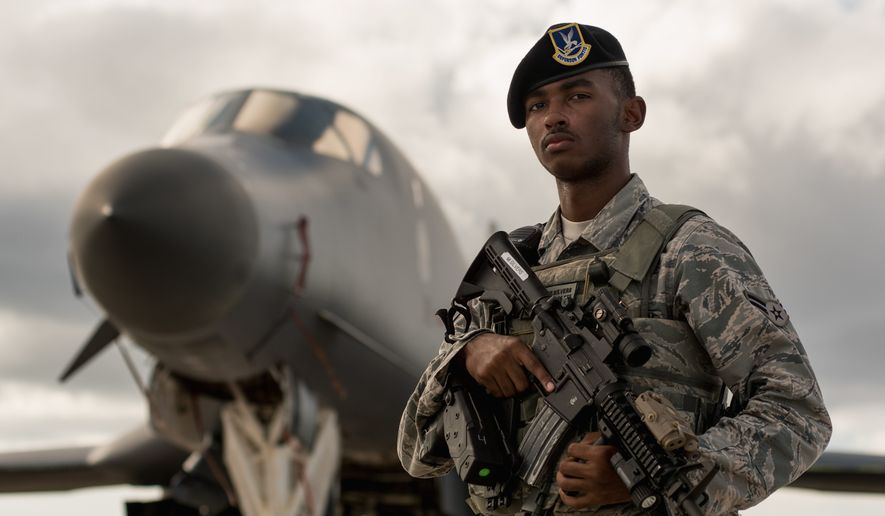The Defense Department is scrambling for ways to ensure the U.S. military’s fleet of warplanes is able to fly and fight when called upon, despite a string of accidents over the past several months.
Defense Secretary James N. Mattis recently took the unprecedented step of demanding an 80 percent readiness rate for all military aircraft, just days before the Pentagon ordered a fleetwide grounding of the next-generation F-35 Joint Strike Fighters.
Both developments underscore the difficulties Pentagon and service leaders face in guaranteeing American air power can continue to exert dominance in the skies above battlefields worldwide, while demands on the increasingly aging fleet continues to soar.
The number of crashes involving American military aircraft — including fixed-wing fighters, bombers, cargo haulers, and rotary-wing attack and supply helicopters — is up 40 percent over a four-year period, according to a Military Times analysis of such incidents from 2013 to 2017.
The Military Times also first reported details of the fleetwide suspension of F-35 operations. In the case of the Navy and Marine Corps’ aerial fleets — specifically its rapidly aging F/A-18 Hornet and Super Hornet fighter jets — catastrophic incidents doubled during that same four-year period.
“Aviation has been the most problematic area” in terms of operations and readiness facing the Marine Corps, service Commandant Gen. Robert Neller told reporters Wednesday. “In [fiscal year] 2017, we had a horrible year … [and] we lost a lot of Marines” because of aircraft crashes either during training or live operations, the four-star general said during a breakfast briefing in Washington.
Marine Corps aviation units sustained two crashes in a single day in April.
A Marine Corps AV-8B Harrier attack aircraft crashed while on approach for landing at the U.S. facility in Djibouti. Although the pilot of that aircraft survived the incident, four Marine Corps crew members died when a CH-53E Super Stallion heavy-lift helicopter crash-landed in Southern California.
Capt. Samuel A. Schultz, 1st Lt. Samuel D. Phillips, Gunnery Sgt. Derik Holley and Lance Cpl. Taylor Conrad were killed during routine air training operations based out of Twentynine Palms, California.
The incidents, Gen. Neller said Wednesday, were rooted in the increasing operational tempo facing not just Marine Corps, but all air combat units across the services. “We are flying a lot more than we were” just three years ago, he said.
The Marine Corps chief added that maintenance on the fleet has not kept pace with the combat tempo.
Federal lawmakers in March pumped a total of $130 million for the services’ operations, maintenance and training accounts into the omnibus spending bill that President Trump signed into law.
Congress made the investment after a slew of training accidents left numbers of U.S. service members dead.
But the lack of federal dollars over the past several years, as a result of massive, across-the-board military spending cuts under the Obama-era Budget Control Act, has contributed to a spate of deadly incidents, the Pentagon says. Mr. Mattis acknowledged the fiscal challenges facing the services as they pursue the 80 percent readiness rate.
But the defense chief also noted the risk of failing to address the critical nature of the aging aircraft fleet.
“For change to be effective and efficient, we must focus on meeting our most critical priorities first,” Mr. Mattis wrote in a Sept. 17 memorandum calling for the 80 percent readiness mandate.
In some cases, combat commanders have already been able to turn the corner on readiness challenges.
Aviators and maintenance crews have worked overtime to get the Marine Corps’ version of the F-35 Joint Strike Fighter ready for its deployment to the harsh operational environments of North Africa and the Middle East, Gen. Neller said.
“The readiness has been really good. Surprisingly good,” Gen. Neller said about the jet’s ongoing deployment with U.S. Central Command. “It didn’t just happen.”
He noted the time and effort Marines on the ground and in the air put in to keep the Corps’ F-35B variant flying and fighting.
But successes have been overshadowed by a number of large-scale suspensions of U.S. air operations.
A day after Gen. Neller praised the Marines’ work in Central Command, Pentagon officials ordered the suspension of F-35 air operations worldwide. The order was announced after an August accident involving an F-35B fighter went down near Marine Corps Air Station Beaufort in South Carolina.
The Marine Corps pilot survived, but the incident prompted an inspection of the fighter’s fuel tubes within the fifth-generation fighter’s engine, officials from jet maker Lockheed Martin said.
In June, Air Force commanders at the 18th Air Wing based at Kadena Air Base in Japan shut down its F-15 training operations after an F-15C Eagle fighter jet crashed off the southern coast of Okinawa during a routine training operation.
It was the 12th such incident to involve American military aircraft this year.
• Carlo Muñoz can be reached at cmunoz@washingtontimes.com.




Please read our comment policy before commenting.